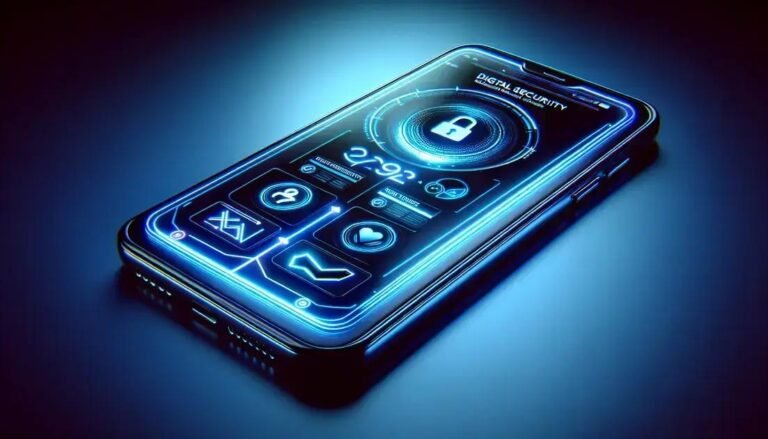Recover Deleted Photos From Phone – Learn How to Restore in Seconds
Have you ever accidentally deleted a crucial picture on your phone and frantically wondered how to get it back? You’re not alone. Many face this dilemma and it isn’t always as bleak as it seems. Understanding how to recover deleted photos from phone can save precious memories and time.
It might surprise you to know that modern smartphones have several built-in features designed to help with photo recovery. Coupled with a range of powerful third-party apps, the chances of retrieving those snapshots are higher than ever.
Whether you’re tech-savvy or a digital novice, this guide will walk you through the steps to bring back your lost images. So, are you ready to dive in and explore the methods?
Understanding Photo Recovery Limitations
Understanding the limitations of photo recovery is crucial in managing your expectations and taking the right steps. When photos are deleted, they are not entirely removed but marked as ‘free’ space on the device. This is where recovery software comes in.
Limitations You Might Face:
- The longer you wait, the less likely you are to recover your files, as new data can overwrite them.
- Some recovery tools may not support all file formats or might only restore low-resolution versions of your photos.
- Certain operating systems have unique structures that can pose additional recovery challenges.
It’s also important to note that while many tools offer free trials, they often require a purchase to complete the recovery process fully.
Managing Your Expectations
Having realistic expectations about photo recovery can save you from frustration. Knowing that not all tools guarantee full recovery and that sometimes partial recovery might be your best option can help guide your decisions.
Ensure that you choose the correct tool based on your device and file types, and act quickly to maximize your chances of success.
Utilizing Built-In Recovery Features
Most smartphones come equipped with built-in recovery options, which can be a lifesaver when you accidentally delete photos. Whether you’re using an Android or iOS device, these features offer initial steps to attempt photo recovery before considering third-party solutions.
Using Android’s Built-In Features
- Check your Google Photos app. Deleted photos often move to the ‘Trash’ or ‘Bin’, where they remain for up to 60 days before being permanently deleted. To restore, open the app, navigate to Trash, select the photos, and tap Restore.
- Look into the gallery app’s settings. Many devices include a “Recycle Bin” feature similar to Google Photos.
Utilizing iOS Recovery Options
- Open the Photos app and go to the Recently Deleted album. Here, photos are kept for up to 30 days. Select the images you want to restore and tap Recover.
- If you back up with iCloud, you might retrieve photos by restoring a backup from a date before the photos were deleted.
These initial steps are crucial and often the quickest way to recover your photos without additional software.
Exploring Third-Party Recovery Apps
When built-in recovery options fall short, turning to third-party recovery apps can be an effective solution. These apps can delve deeper into storage systems, enhancing your chances of retrieving lost photos. Here’s how you can make the most of these tools.
Choosing the Right Recovery App
- Research: Look for well-reviewed apps with high ratings. Consider visiting forums or reading user testimonials to gauge effectiveness.
- Compatibility: Ensure the app supports your device and file type. Some apps are specifically optimized for Android or iOS platforms.
Top Applications to Consider
- DiskDigger: Available for Android, it offers a basic recovery for free with features for a deeper scan in the paid version.
- EaseUS MobiSaver: Compatible with both Android and iOS, this app provides a user-friendly interface and support for multiple file formats.
- Dr.Fone: Known for its comprehensive recovery solutions, Dr.Fone offers features beyond basic photo recovery.
Once you have selected an app, follow the in-app instructions to perform a scan and choose which photos to recover. Remember, acting quickly and wisely can improve your results.
Preventing Future Photo Loss
Preventing the loss of your cherished photos is essential to avoiding heartache in the future. Simple steps can make a big difference, ensuring that your precious memories remain safe and accessible.
Enable Automatic Backup
- Google Photos: Set it to automatically back up your images whenever you are connected to Wi-Fi. This service offers reliable storage and access from any device.
- iCloud: iOS users can leverage iCloud to automatically sync photos across all Apple devices. Ensure you have enough space and a stable connection for seamless backups.
Use External Storage Options
- Invest in external hard drives or USB flash drives as an additional backup measure. Regularly transferring photos to these devices can offer an extra layer of security.
- Consider network-attached storage (NAS) solutions for more extensive storage needs, providing access via your home network.
Stay Organized
Regularly sort and categorize your images. This practice not only helps in reducing clutter but also makes it easier to spot missing photos and act quickly if files are accidentally deleted.
Implementing these strategies can significantly reduce the risk of future photo loss, ensuring your memories are well-protected.
FAQ – Frequently Asked Questions About Recovering Deleted Photos from Phones
Can I recover photos that were deleted a long time ago?
Recovery is more challenging over time as new data can overwrite old photos. Quick action increases the likelihood of success.
What are the best apps for photo recovery on Android?
Popular options include DiskDigger and EaseUS MobiSaver, known for their user-friendly interfaces and effective recovery capabilities.
How can I prevent photos on my iPhone from being permanently deleted?
Enable iCloud backups for automatic syncing and use the ‘Recently Deleted’ album to recover photos within 30 days.
Do built-in recovery features work on all types of deleted photos?
Built-in features typically work for JPEG and PNG files, but may not support all formats. Third-party apps can offer broader support.
How frequently should I back up my photos to prevent loss?
Regular backups, such as weekly or monthly, are recommended. Automated solutions like cloud storage can streamline this process.
Can third-party apps recover photos after a factory reset?
A factory reset often makes recovery impossible as it wipes the data completely. Backups are the best prevention against this loss.






